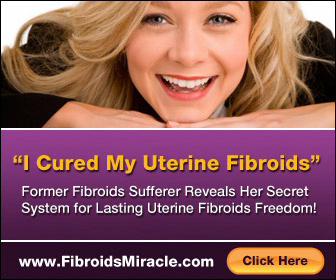Many women were told that uterine fibroids will go away after menopause, but the statement is believed to be misleading. According to research, these fibroids can still cause problematic symptoms for many women even without a menstruation.
These postmenopausal symptoms include bleeding and lower back pain, which makes it difficult to go to the bathroom. There are also some women who experience fewer symptoms after their fibroids shrunk after menopause.
The important thing to remember about fibroids is that it is best to get detected early on. This way, you can have enough time to consider your treatment options. Aside from having your uterus removed, you can also opt to undergo myomectomy, a procedure that allows you to keep your uterus and have the fibroids removed. This procedure is commonly preferred by women who are keen about fertility.
Why is early detection important for fibroids? If you will opt to wait and not do anything about them because you aren’t bothered, they will continue to grow through the years and will also become tougher and more difficult to remove.
Uterine fibroids shrink after menopause, but it is impossible for these fibroids to miraculously disappear. They will become harder through time as they calcify, which makes it difficult to remove through a laparoscopic procedure.
No matter what the woman’s age is when the fibroids develop, the symptoms will remain the same. The growths are non-cancerous, but the symptoms can be painful, such as pressure in the bowels, bladder or pelvic region, pain in the lower back, pelvic pain, sore legs, discomfort during sex, fatigue, anemia, and enlarged abdomen.
Seek medical attention immediately once you experience vaginal bleeding even after the menopausal stage. Your healthcare provider can give the best assessment of whether the condition is serious or not. They can also create a treatment plan according to what you want to happen, and the results of your tests.
These fibroids or leiomyoma are small tumors found in the uterus wall. It can only be cured through surgical procedure, and it is a common misconception that it will naturally heal after reaching the menopausal stage.
In most cases, women develop these tumors during childbearing age. It is also possible to develop them for the first time during the menopausal stage.
Both progesterone and estrogen increase the risk of a woman from having fibroids. The levels of both these hormones drop when a woman enters the menopausal stage. This lowers your risk of developing new fibroids and in certain cases, it also causes the preexisting fibroids to become smaller.
The following can increase your risk of having these tumors during the postmenopausal stage:
- Long-term stress
- No history of pregnancy
- Obesity
- Genetics or family history
- Low levels of vitamin D
- Hypertension
These fibroids cause different symptoms to women in their pre and postmenopausal stages.
The most common symptoms for women in their postmenopausal stage include the following:
- Fever
- Frequent urination
- Fullness in the lower belly
- Menstrual-like cramping
- Anemia from a significant loss of blood
- Frequent spotting
- Heavy bleeding
- Abdominal swelling
No matter what your age is, it is best to get yourself checked by the right health professional if you suspect that you may already have uterine fibroids.


